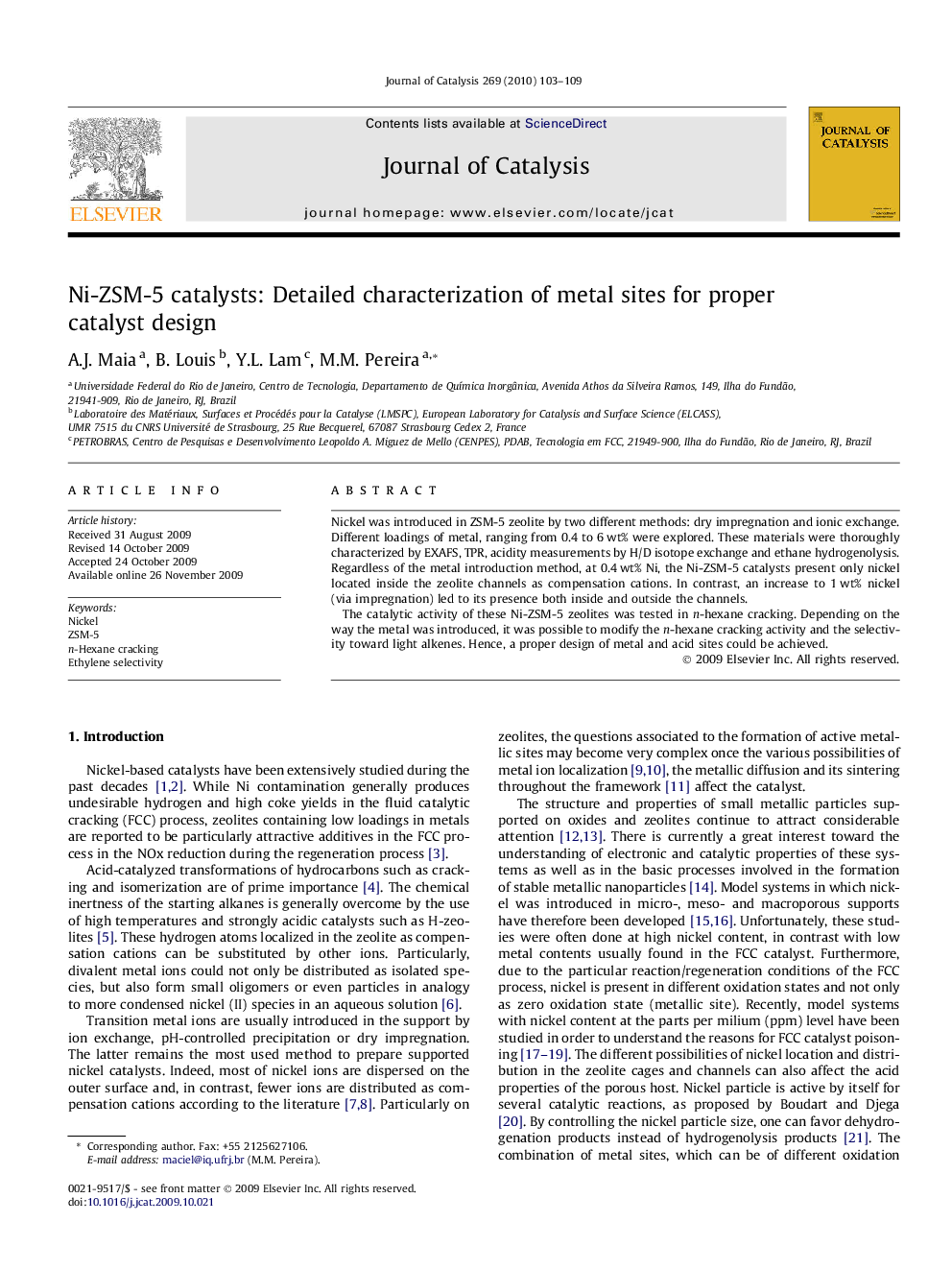| Article ID | Journal | Published Year | Pages | File Type |
|---|---|---|---|---|
| 61995 | Journal of Catalysis | 2010 | 7 Pages |
Nickel was introduced in ZSM-5 zeolite by two different methods: dry impregnation and ionic exchange. Different loadings of metal, ranging from 0.4 to 6 wt% were explored. These materials were thoroughly characterized by EXAFS, TPR, acidity measurements by H/D isotope exchange and ethane hydrogenolysis. Regardless of the metal introduction method, at 0.4 wt% Ni, the Ni-ZSM-5 catalysts present only nickel located inside the zeolite channels as compensation cations. In contrast, an increase to 1 wt% nickel (via impregnation) led to its presence both inside and outside the channels.The catalytic activity of these Ni-ZSM-5 zeolites was tested in n-hexane cracking. Depending on the way the metal was introduced, it was possible to modify the n-hexane cracking activity and the selectivity toward light alkenes. Hence, a proper design of metal and acid sites could be achieved.
Graphical abstractNickel was introduced in ZSM-5 zeolite by two different methods: dry impregnation and ionic exchange. The catalytic activity of Ni-doped ZSM-5 zeolites was tested in n-hexane cracking. It was possible to modify the n-hexane cracking activity and selectivity toward light alkenes, by tailoring both the metallic and acidic active sites.Figure optionsDownload full-size imageDownload high-quality image (53 K)Download as PowerPoint slide
